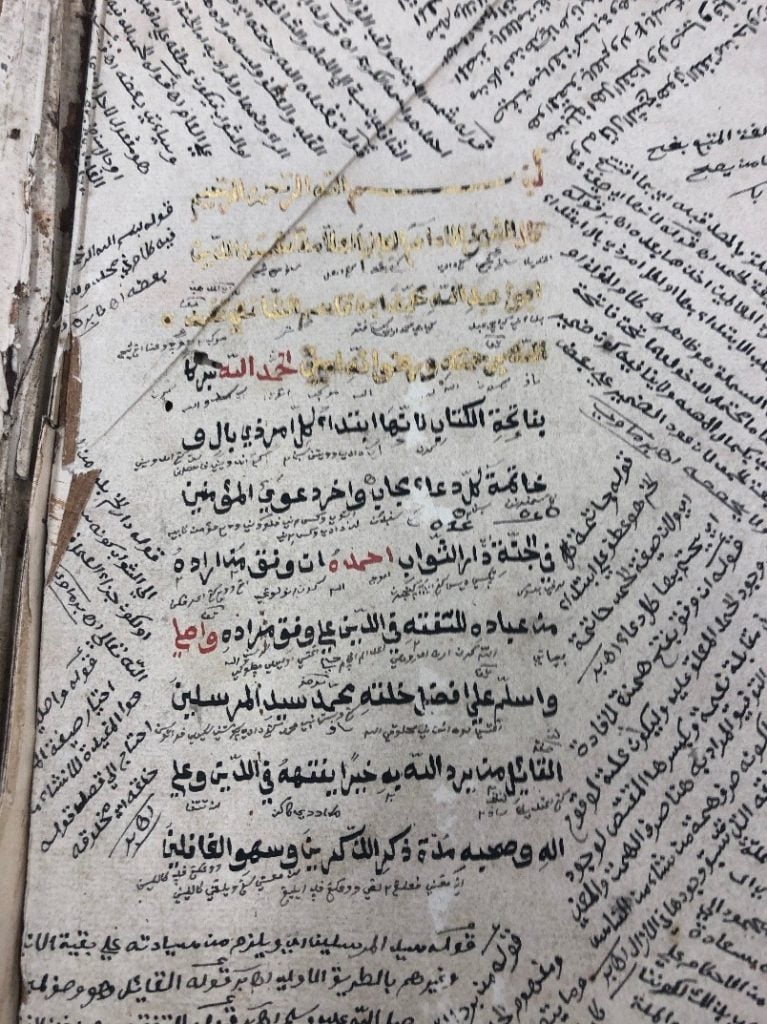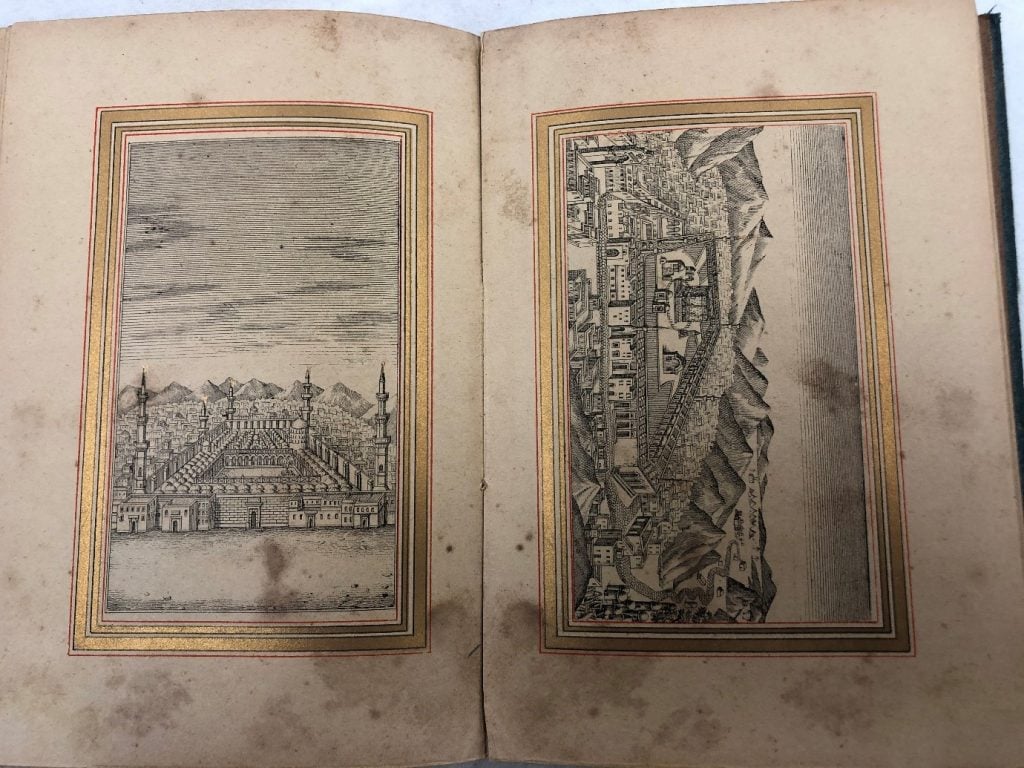By Leila Alhagh
Select items from the Michael Abbott Collection are on display now at the World of the book exhibition.
The Michael Abbott collection consists of 50 Southeast Asian manuscripts and prints. State Library Victoria received this collection as a gift from Michael Abbott QC in 2012. This collection is of international significance as the manuscripts from Southeast Asia survive in relatively low numbers due to the climate.
The collection comprised of 22 Qur’āns, 20 Arabic texts, 7 Javanese texts (in Javanese script), and a talisman (concertina-style manuscript).
The Arabic manuscripts and printed books of the collection were mainly produced in the 19th century in Indonesia, India, and Turkey. These volumes are written in Arabic, Javanese, Urdu, and Jawi languages and cover subject matters like Islamic theology, creed, jurisprudence, doctrines, Arabic grammar, prayers, ḥadīth (prophetic narrations), sermons, commentaries, and Islamic scholarship.
Most volumes of the collection are collective volumes of multiple texts. In most cases, these independent texts are written by the same hand. These volumes were used by the students of Islamic schools in Indonesia (Pesantren).
The following picture shows a page from one of these volumes.

The text of this manuscript is in Arabic. Interlinear Javanese translations and Arabic glosses on the margins of this page can be observed. The Bismillah and three first lines of the text are highlighted with golden ink. This text is a copy of a commentary known as Fatḥ al-Qarīb al-Mujīb fī Sharḥ Alfāẓ al-Taqrīb by Muḥammad ibn Qāsim al-Ghazzī (also known as ibn al-Gharābīlī) (1455 – 1512) on the text of Al-Ghāyat wa-al-Taqrīb (written by ‘Abū Shujāʿ al-Iṣfahānī (b. 1043)).
The book covers subjects in Islamic jurisprudence and is considered one of the important Shāfiʿī textbooks taught in Islamic institutions, schools, and even mosques.
Two scholia are written on the margins of this page in different directions explaining the text. One of them is the scholium by Ibrāhīm ibn Muḥammad al-Barmāwī (1694 or 1695) (Ḥāshīyat al-Barmāwī ʿalá Sharḥ al-Ghāyat). The other is a scholium by Ibrāhīm ibn Muḥammad al-Bājūrī (1784-1860) (Ḥāshīyat al-Bajūrī ʿalá Sharḥ ibn Qāsim al-Ghazzī).
This manuscript is made of European-style-laid paper in thick cream colour with a watermark. The watermark is a Dutch lion with a sword in a crowned medallion with an inscription of ‘concordia res parvae crescunt’.
The countermark reads VDL. Based on the watermark and countermark, the paper of this manuscript was made by the factory of Jan, Claes, and Aris van der Ley in Zaandijik, Netherlands post-1846 (Hinzler 1986, p. 7). This volume is a great example which shows the education practices as well as paper trades in Southeast Asia.
Another fascinating example from the collection is this printed copy of a prayer book named Dalā’il al-Khayrāt wa Shawārīq al-Anwār fī Dhikr al-Ṣalāt ‘alá al-Nabī al-Mukhtār, known as Dalā’il al-Khayrāt (Guidelines to the Blessings and the Shining of Lights, giving the saying of the blessed prayer over the chosen Prophet).
The text contains a collection of prayers by Muḥammad ibn Sulaymān al-Jazūlī al-Simlālī (d. 1465/870 AH) in the praise of the prophet of Islam, Muḥammad including the ones that are suggested to be recited on certain days of a week.
In a section of the text, the author mentions the tomb of the Prophet Muḥammad in Medina where he is buried alongside his companions Abu Bakr and ‘Umar. This section created a context for including illustrations of the tomb of the prophet in Medina to the copies of the text. In some copies, an illustration of the Sacred Mosque of Mecca (Majid al-Ḥarām) was added as well.
State Library Victoria’s copy of this text was printed in Istanbul on the 23 of Dhu al-Qa‘dah 1315 AH (April 15, 1898/ the 2nd of Nisan 1314 AH), in the printing house named as Maṭba’ Uthmānīyah.

This copy contains printed images of the Sacred Mosque of Mecca and the Tomb-Mosque of the prophet in Medina.

The colophon at the end of the book shows that this copy is lithographically printed based on the calligraphy of a famous Turkish calligrapher, Nūrī ‘Uthmān known as Qāyishzādah (1833-1894) who transcribed the text in 1887 or 8 (1305 AH).

References:
Hinzler, HIR 1986, Catalogue of Balinese manuscripts in the Library of the University of Leiden and other collections in the Netherlands, Leiden University Press, Leiden.
Rusli, Nurul Iman 2016, Dala’il al-Khayrat: Prayer Manuscripts From The 16th To 19th Centuries, The Islamic Arts Museum Malaysia



